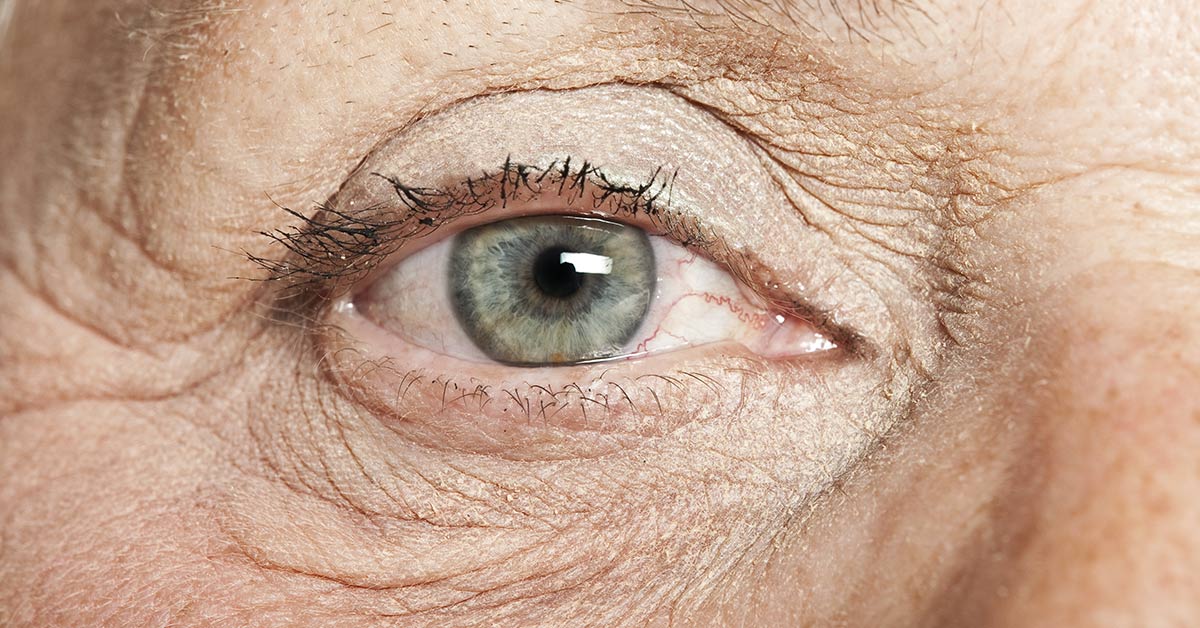Alzheimer’s Disease affects at least 50 million people worldwide, and its prevalence is on the rise. (1) Researchers from Duke University discovered that the early warning signs of Alzheimer’s can be seen in a person’s eyes. That’s right: Long before the brain begins to degenerate, these signs can be seen in the retina. This could have future implications for this currently incurable disease. (2)
The Early Signs of Alzheimer’s Can Be Seen In The Eyes
Duke University scientists have discovered that changes to the eye’s retina could be early warning signs of Alzheimer’s disease. The retina’s job is to receive and organize visual information and send it to the brain. This is, in a very basic format, how we are able to see. (2)
It is the neurons inside the retina that are primarily responsible for this action. These neurons are located in the brain and are also affected by neurodegenerative diseases like Alzheimer’s and Parkinson’s. (3)
“We know that there are changes that occur in the small blood vessels of the brain in people with Alzheimer’s disease, and because the retina is an extension of the brain, we wanted to investigate whether these changes could be detected in the retina using a new technology that is less invasive and easy to obtain,” said Dr. Sharon Ferat. (2)
The scientists can actually see the neurons in your eyes, and they show early warning signs of Alzheimer’s up to years before you notice cognitive decline. The earlier diseases like Alzheimer’s, Parkinson’s, and dementia can be predicted; the earlier a treatment or prevention plan is put in place. (2)
“These changes in blood vessel density in the retina likely mirror what’s going on in the tiny blood vessels in the brain. We are now studying whether these retinal changes can be detected before someone, who has a higher genetic risk for Alzheimer’s, develops signs of memory loss,” explained Dr. Dilraj Grewal. (2)
Read: Scientist: Cannabis-Based Antibiotics Could Be Available Within Five Years
An Eary Warning Sign of Alzheimer’s and a New Hope For The Future
Just like with diseases such as cancer, early detection is paramount for neurodegenerative diseases. In the immediate, the hope is that the retina will eventually allow doctors to detect early warning signs of Alzheimer’s so that patients can properly plan for their futures. (3)
However, the end goal is that this discovery will provide more time for scientists to study how these diseases start and develop over time. This will allow them to trial more treatments for these patients and perhaps even one day find a cure. (2)
“Ultimately, the goal would be to use this technology to detect Alzheimer’s early, before symptoms of memory loss are evident, and enter participants into clinical trials earlier to study new Alzheimer’s treatments,” Fekrat said. (2)
May Be Better Than Other Detection Options
Though early detection was already possible via other options, they weren’t happening very often. Brain scans and spinal taps are risky and expensive. By the time someone fails a memory test, they are already in the later stages of the disease. (3)
“Early diagnosis of Alzheimer’s disease is a huge unmet need,” Dr. Fekrat said. “It’s not possible for current techniques like a brain scan or lumbar puncture (spinal tap) to screen the number of patients with this disease. It is possible that these changes in blood vessel density in the retina may mirror what’s going on in the tiny blood vessels in the brain. Our work is not done. If we can detect these blood vessel changes in the retina before any changes in cognition, that would be a game changer.” (3)
Currently, a PET (brain) scan costs between $3,000 and $6,000. They are also quite invasive. The retinal scan costs only $285 and is not invasive at all. (4)
Turmeric Spice and Everything Nice
Neuroscientist Maya Koronyo-Hamaoui and her team at Cedars-Sinai developed a way to see the plaques in retinal neurons associated with Alzheimer’s. All it uses is optimized ophthalmological equipment and turmeric – more specifically, curcumin.
Curcumin is the natural compound in turmeric that gives it its bright orange color. It also glows yellow in blue light. Curcumin also seems to like amyloid-beta, the same protein that makes up Alzheimer’s plaques.
Prior to the scan, patients drink shakes loaded with turmeric so that these plaques will glow.
University of Florida Biomedical Engineer Ruogu Fang developed another method of detecting the early signs of Alzheimer’s in the eyes. They use a fundus camera. This is a specialized iPhone attachment that takes high-resolution photos of the microscopic blood vessels in the back of the eye. Changes in these will mirror those in the brain’s blood vessels that are associated with these brain diseases.
Neither of these detection methods is perfect, but they are far better than the currently available brain scans and spinal taps.
Fekrat, Dilraj, and their team at Duke are working hard to study this further and will hopefully soon have these scans available for use.
Keep Reading: Know the difference between a heart attack, a cardiac arrest and a stroke. It could save a life
- “Alzheimer’s Disease: Facts & Figures.” Bright Focus.
- “Loss of Blood Vessels in Retina May Signal Alzheimer’s Disease.” Duke Eye Center. March 17, 2020.
- “New study shows an eye scan can detect signs of Alzheimer’s disease.” Eurekalert. March 11, 2019.
- “Our eyes may provide early warning signs of Alzheimer’s and Parkinson’s.” Washington Post. Elizabeth Anne Brown. February 27, 2021

